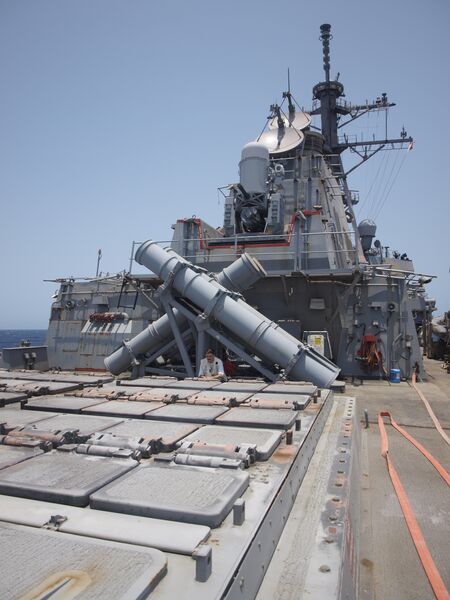
USS Laboon was the first US Navy ship to engage a ballistic missile in combat. (Janes/Michael Fabey)
The US Navy (USN) is facing more kinetic threats in the Red Sea now than it has in the past seven decades, USN officials in the region said.
At the same time, the USN is facing a misinformation campaign about the status of its forces that some liken to information warfare.
“This is the most kinetic maritime environment we've seen since World War II,” Rear Admiral Marc Miguez, then commander, Carrier Strike Group (CSG) 2, told Janes on 11 June in an interview in the Red Sea aboard aircraft carrier USS Dwight D Eisenhower (CVN 69), which anchors the CSG.
Miguez has since left strike group command to become USN chief of legislative affairs in Washington, DC.
Rear Adm Miguez emphasised the different kinds of missiles and unmanned system threats being launched by the Houthis against USN, coalition, and commercial vessels.
“It's not only ballistic, but anti-ship cruise missiles and one-way attack UAVs [unmanned aerial vehicles] as well and, more recently, the unmanned surface vessels (USVs) and unmanned undersea vessels as well.”
USN ships remain constantly on alert as they patrol the regional waters.
“As with anything there's an ebb and flow,” Rear Adm Miguez said. “But we are still being shot at. They are shooting very day. The pace maybe has slowed a little. The frequency hasn't. They are continuing to attack innocent maritime traffic.”
He added, “We just had one of our ships, two weeks ago, shot at not once but twice, within a span [of a] couple of hours. It's real.”
Looking to read the full article?
Gain unlimited access to Janes news and more...







